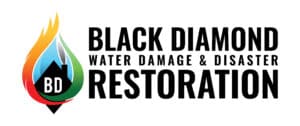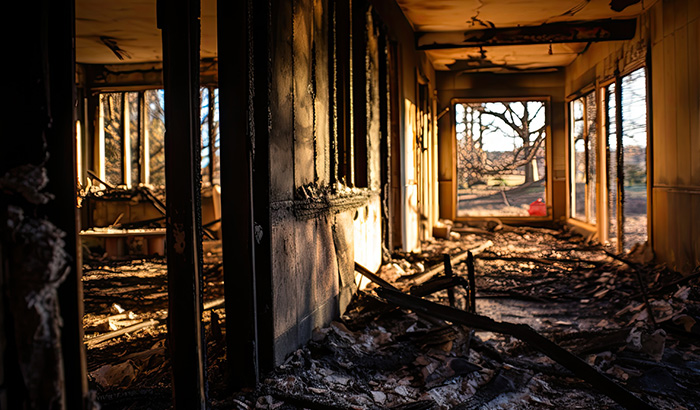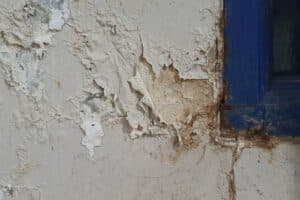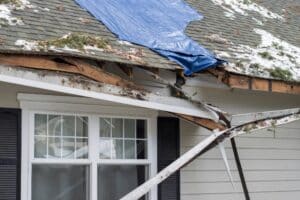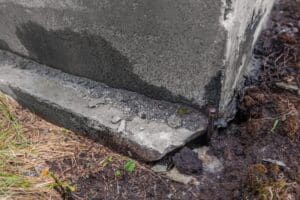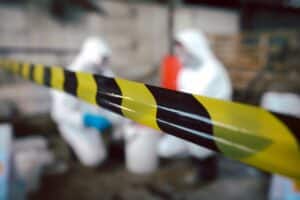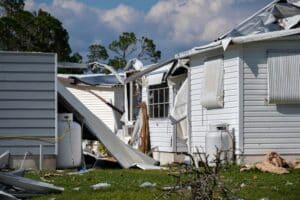Even though smoke and fire damage go hand in hand, there are key disparities that create challenges for property owners recovering after a blaze.
You’ve probably heard the phrase, “Where there’s smoke, there’s fire.” This phrase accurately explains the commotion of a fire, other than the flames’ immediate urgency. While each is destructive in its own way, you must understand their differences to determine the best cleanup approach.
Smoke Damage vs. Fire Damage
Smoke and fire damage are often used interchangeably, but each comes with distinct characteristics. Smoke damage is physical harm produced by a fire’s smoke but not by the fire itself. The leftovers of the fuel that once powered a fire generate smoke damage.
Unlike fire, smoke does not destroy anything but leaves behind a layer of soot and a bad stench that’s difficult to remove. Smoke has a greasy-like quality that makes it taxing to eradicate and restore.
Fire damage refers to the burning or melting of objects due to excessive heat. Damage can occur due to the flames directly or other corrosive substances emitted by the fire.
Fire and Heat Damage
Fires can sweep through an area in no time at all. The severity of fire damage is mainly determined by the strength of the fire that produced it. For example, if the fire was started by a short circuit or a gas leak, it might spread quickly, resulting in significant losses.
No matter what causes a fire, the consequences are often disastrous. This includes physical damage to structures and items caused by direct flame and intense heat exposure. It can cause walls, ceilings, and roofs to collapse, as well as the destruction of furniture and personal items.
Fire damage can take the form of many different shapes and sizes. The subsequent damage is the consequence of a combination of smoke, heat, and soot, which can cause various problems that need to be professionally addressed.
Heat damage can affect anyone in the fire’s path. No matter how large the fire is, it can burn you. A wide range of outcomes can accompany heat damage, but burns are the most common.
Burns are classified based on severity from mild to life-threatening. If you have experienced any type of burn, be sure to seek immediate medical attention.
Types of Smoke Damage
Like fire damage, smoke damage also manifests itself in unpredictable shapes and sizes. Smoke damage primarily affects surfaces and can cause staining, discoloration, and corrosion of materials. It can also cause odors to permeate walls, ceilings, and objects. There are several types of smoke damage, including:
- Wet smoke damage – A slow-burning, low-temperature fire produces wet smoke. It is often the most difficult type to remove since it is sticky and thick, adhering to all surfaces and objects. Wet smoke also has a significant stench, making cleanup a more time-consuming and complicated operation.
- Dry smoke damage – A powdery dry soot is left behind by dry smoke. It burns at a high temperature because of the presence of paper and wood. It’s easier to clean and usually wipes away neatly. It is, however, a fine soot that can easily slip into cracks and crevices, hidden from view. Because the odor is disguised, it may persist even after washing.
- Protein smoke damage – Meat, beans, and any other protein present in meals are examples of protein damage. It often leaves a yellow-brown residue that resembles grease. It can be tough to clean because of the stubborn grease. Professional cleaners can handle this the best since they use chemicals specifically developed for protein-based residue.
No matter the type of smoke damage, it’s important to have it professionally cleaned. Professionals will ensure the smoke damage is addressed safely and effectively so you can enjoy your home again.
Common Causes of House Fires
Prevention is the best method to avoid any smoke and fire damage. By understanding the leading causes of house fires, you can be aware of the potential hazards around your home. Here are some common causes of house fires to watch out for:
- Cooking – Cooking fires account for nearly half of all recorded residential fires. Cooking is also the most common cause of home fire injuries and the second most common cause of home fire deaths.
While kitchen fires are the most prevalent cause of home fires, they are usually only serious when caused by grease fires. When your frying oil reaches temperatures above 375 degrees Fahrenheit, it will begin to smoke and then burst into flames. If you notice wisps of smoke, you must act quickly to prevent the fire from starting.
- Electrical – You probably don’t think about your home’s wiring often, but faulty wiring can spark an immediate house fire. There are some common symptoms that your house’s wiring isn’t operating properly.
Pay attention if the lights fade when you use another device, if you can only use one appliance at a time, and if you have regularly blown fuses. Investing in smoke alarms, fire extinguishers, and carbon monoxide alarms as your first line of defense against house fires will help protect your home and family.
- Smoking – Besides the obvious health risks of smoking, it’s also a leading cause of house fires. Incorrect cigarette disposal and cigarette smoke damage are profound areas of concern. Designate smoking areas far enough away from any combustible material and provide clearly marked receptacles for extinguishing cigarettes. These are two simple ways to avoid costly cigarette smoke damage restoration.
Health Implications
Where there’s smoke, there’s always soot. Soot is a greasy or powder-like substance mostly composed of carbon and produced from burns. Unfortunately, this material poses several health risks in your home, including the ones listed below:
- Lung problems – Lingering particles from a fire can enter and irritate the lungs, causing various issues.
- Skin problems – A smoke-damaged home can create skin problems like itching and rashes.
- Poisoning from carbon monoxide – Gases emitted by soot and smoke particles can induce dizziness, headaches, and poisoning. Prolonged soot exposure may even increase the risk of certain cancers.
Smoke and Fire Restoration
Smoke and fire damage can harm your home; luckily, restoration is made easy with professional hands. Let’s take a deeper look at the different steps of restoration with each type of damage:
1. Assessing the Damage
- Fire damage – Fire damage restoration primarily covers the damage caused by the flames and strong heat of a fire. This involves restoring or reconstructing structural materials damaged or destroyed by the fire, such as walls, ceilings, and floors. It also involves fixing or replacing burned or badly damaged property and valuables.
- Smoke damage – Smoke damage restoration involves the cleanup and renewal of secondary smoke and soot damage. This includes cleaning or restoring goods coated with smoke residues, removing soot residues from surfaces, deodorizing damaged areas to eliminate smoky aromas, and cleaning or restoring coated items.
2. Methods
- Fire damage – Methods for fire damage restoration can be quite extensive. Depending on how much damage the fire caused. structural engineers and contractors may be called in to inspect and restore the building’s integrity. It may also include electrical and plumbing repairs if the fire has damaged these systems.
- Smoke damage – Methods for damage restoration involve using specific cleaning techniques and tools to remove soot and smoke residue. Professionals use cleaning chemicals, abrasives, and even ultrasonic cleaning devices to eradicate the sights and smells. Air filtration procedures are also used to get rid of persisting smoke scents.
3. Timeline
- The timeline for fire damage restoration depends on the level of damage that occurred. Depending on the degree of the damage, the restoration procedures might include rebuilding and construction work, which can take weeks or even months.
- The timeline for smoke damage restoration is often quicker than fire damage. Unlike fire damage restoration, smoke damage restoration can usually begin right away. Cleaning and deodorization procedures can begin once the property is safe to enter.
4. Hire Professionals
- General contractors, structural engineers, and electricians who specialize in repairing fire-damaged structures are frequently involved in fire damage restoration. Permits and inspections may also be required to ensure compliance with building codes.
- Professionals with cleaning and cleanup experience, such as fire restoration companies, frequently handle smoke damage restoration. They have the tools and skills to remove soot and smoke residues from surfaces and belongings safely and effectively.
Returning Safely Home After a Fire
Returning home after a fire can feel scary and uncertain. Once firefighters have deemed the area safe to return, exercise caution until professional restoration services can arrive. Then, take the following steps:
- Always follow the advice of the fire department and restoration specialists.
- Try to steer clear of the affected areas. If you must sort through any debris, wear sturdy shoes, a mask, and protective gear — hazardous conditions and chemicals could be present.
- Anything that has come in contact with ash should be cleaned and sanitized.
- Refrain from turning on propane tanks if you inspect any visual damage.
- Don’t eat, drink, or breathe in anything that has been near the flames, smoke, or soot.
Following these tips will keep you and your family safe.
Black Diamond Water Damage and Disaster Restoration Can Help
With a goal of providing excellent service, Black Diamond Water Damage and Disaster Restoration provides the best smoke and fire damage restoration services for you and your home.
Smoke damage removal from Black Diamond Restoration is efficient, effective, and dependable. To learn more, please reach out today via our website or by calling 801-383-0964.
toto slot